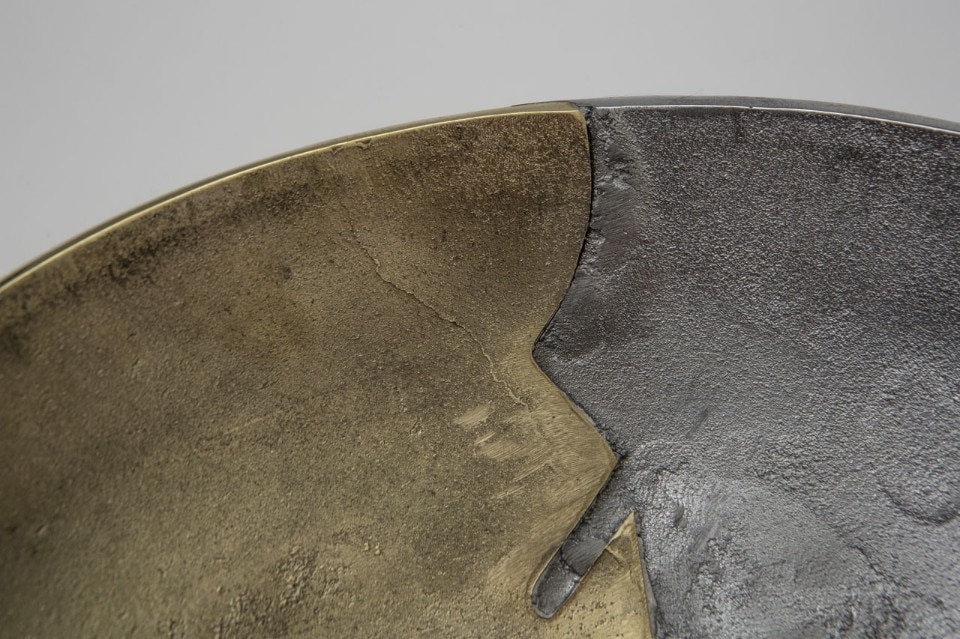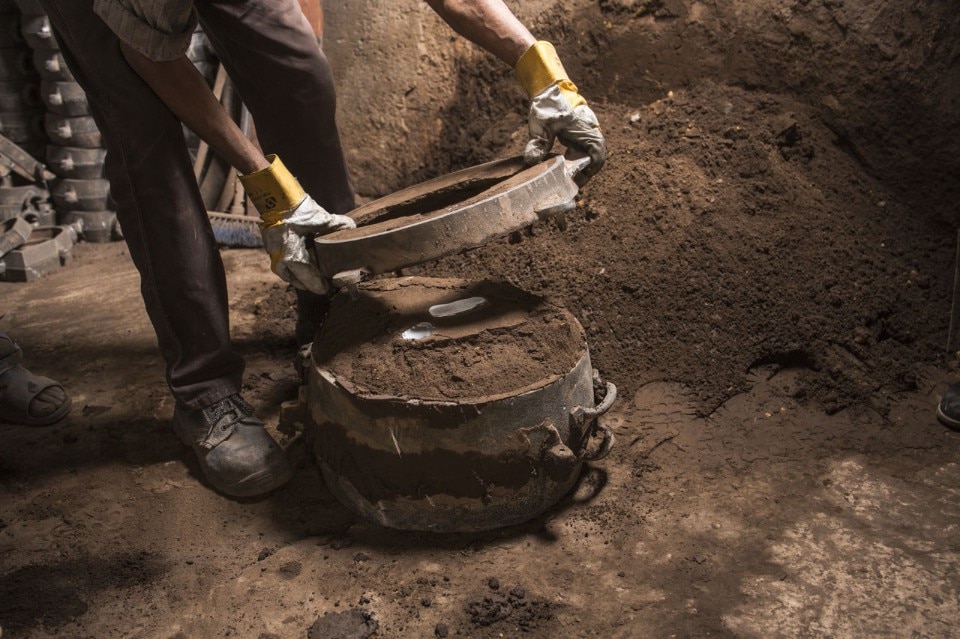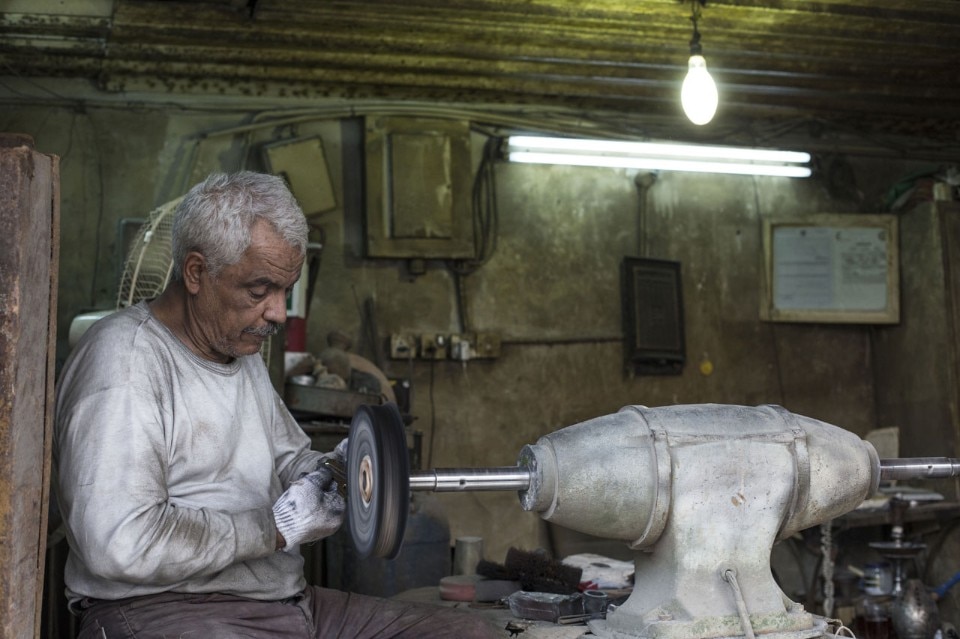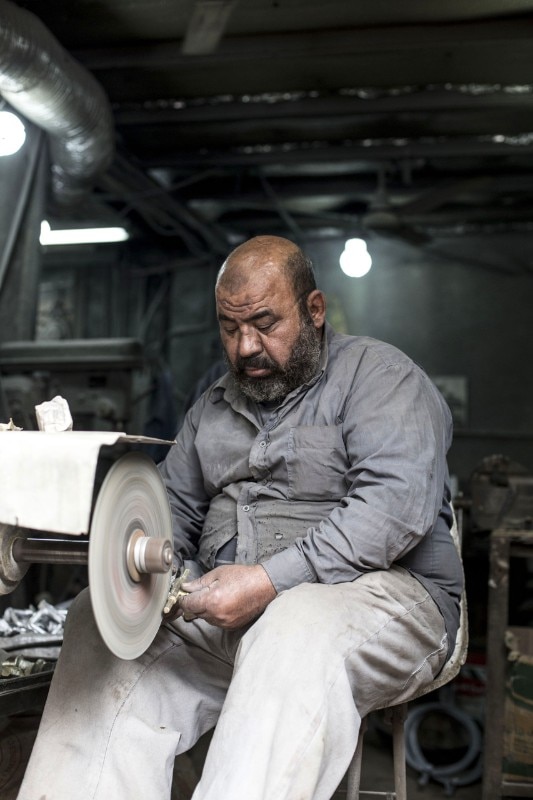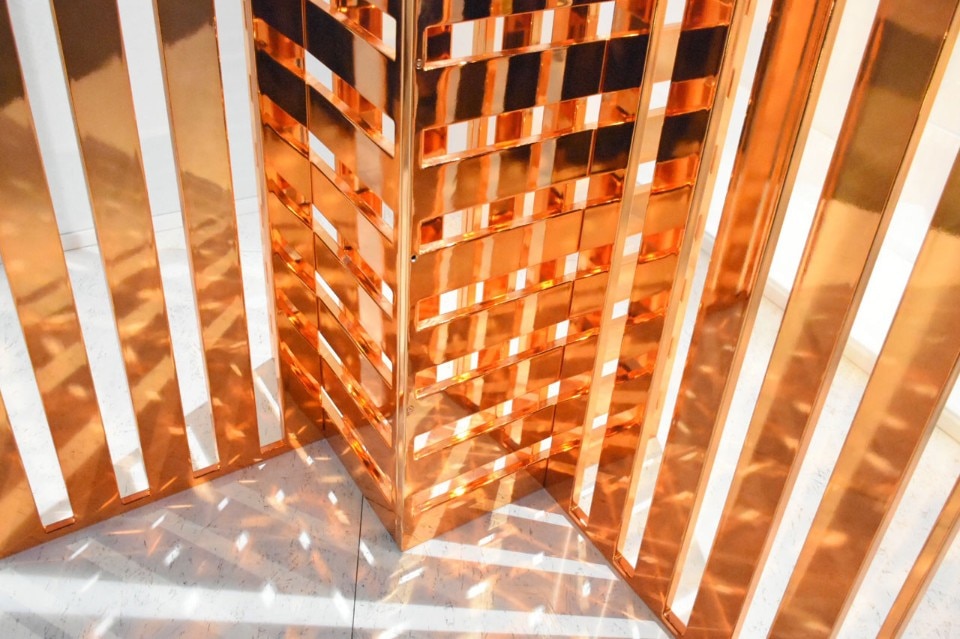After graduating at Yale with Peter Eisenman a year ago, Dima Srouji decided to go back to Palestine and explore the possibilities of Hebron glass. Kawther Alsaffar studied at the Rhode Island School of Design and at the Syracuse University of NY and then returned to Kuwait to work with local Alwafi metal craftsmen. Aljout Lootah, raised in Dubai, transformed a traditional shape from the desert life into a pattern for a furniture collection, collaborating with an international brand. Three young designers who grew up in their countries, studied abroad and then went back home to empower the local economy.

 View gallery
View gallery
“The artisans couldn’t get it, they would say, tell us, what is this? What is this theory that you’re talking about? Architecture? How can this possibly be architecture?”, says Dima Srouji laughing, when describing her Hollow Forms presented at the Dubai Design Week. She actually started her research process experimenting with form in a digital matter, thinking about the history of architecture, thinking about Piranesi. She was researching on what the form meant by itself and its relationship to the ground.

When she moved back to Palestine after getting her degree in Architecture at Yale, she was looking for the right material that could express her ideas. There, she met two glass blowers that had their little shop on top of a roof in Jaba’, near Ramallah. They were struggling in competing with the more famous Hebron, whose primacy in glass making traces back to the Phoenician, and still remains a heavy mass-production area. “When I met these guys in Jaba’ I thought it was the perfect match, combining cutting edge technology and this ancient technique. It really made sense for me to work with them.”
Srouji’s objects are all designed in 3D and the real challenge is the translation between computer software to the traditional techniques. “This is actually where the real fun is. I give them dimensions that are very rigid on the computer and everything is designed perfectly and then, when that translation happens, due to the fluidity of the glass, they have all the freedom needed, leaving space to human error, human intuition and exploration.”

 View gallery
View gallery
“At the beginning I found a lot of resistance, people didn’t understand why I was making this product, how could it possibly be useful. Then I kickstarted it and here I am.” Kawther Alsaffar (born 1990) was asking for 40,000 pounds to support her Dual Bowls project. She pledged 101,422, instead. “A lot of people don’t find value in the way we do things here in the Middle East, so I wanted to show that there is a lot of value, instead.” She explored a technique that goes back to ancient times, a tradition of melting together different metals to create gates and Islamic patterns. “Nowadays people lost the actual value of metals like copper and brass. They just prefer to buy something that is pre-painted and cheap.” Through the use of sand, Alwafi craftsmen in Kuwait developed a unique process of dual metal casting. Alsaffar empowers this knowledge by using simple shapes that highlight the beauty of the imperfections of this technique, pushing it to the limits.

Born and raised in Dubai, Aljoud Lootah started as a graphic designer and then decided to fully dedicate herself to interior design. At the Dubai Design Week she had her own installation at the D3 (Dubai Design District) and was showcasing a shiny collection of stools, tables, lamps and screens. She named it AlAreesh after a traditional screening technique that protected the inhabitants from the desert climate. The AlAreesh structures are walls that were constructed from dried plain fronds of palm leaves, placed vertically as poles, and linked by the use of ropes to create simple enclosures providing shade from the sun and protection from the wind. These were commonly used in the UAE as summer houses, where the gaps in the walls allowed ventilation within the structures, by simply moving the vertical poles.

 View gallery
View gallery
The collection is made in collaboration with the Probas Plating, a German electroplating surface engineering company. “We chose copper because it’s a metal that is not very used in the region. Most of people would tend to go with gold or silver, the ‘safe’ colours. I wanted to have a finish that looked quite different and a colour that would reflect our environment, made of orange dunes, sand dunes, very warm shades. Altough the concept is inspired by a traditional enclosure, I wanted to use shiny materials to reflect the surroundings, welcoming more dimensions.”
- Collection:
- Hollow Forms
- Designer:
- Dima Srouji
- Venue:
- Abwab, Dubai Design District, Dubai Design Week 2017
- Collection:
- Dual Bowl
- Designer:
- Kawther Alsaffar
- Venue:
- Abwab, Dubai Design District, Dubai Design Week 2017
- Collection:
- AlAreesh
- Designer:
- Aljou Lootah
- Venue:
- Installation at Dubai Design District, Dubai Design Week 2017






















